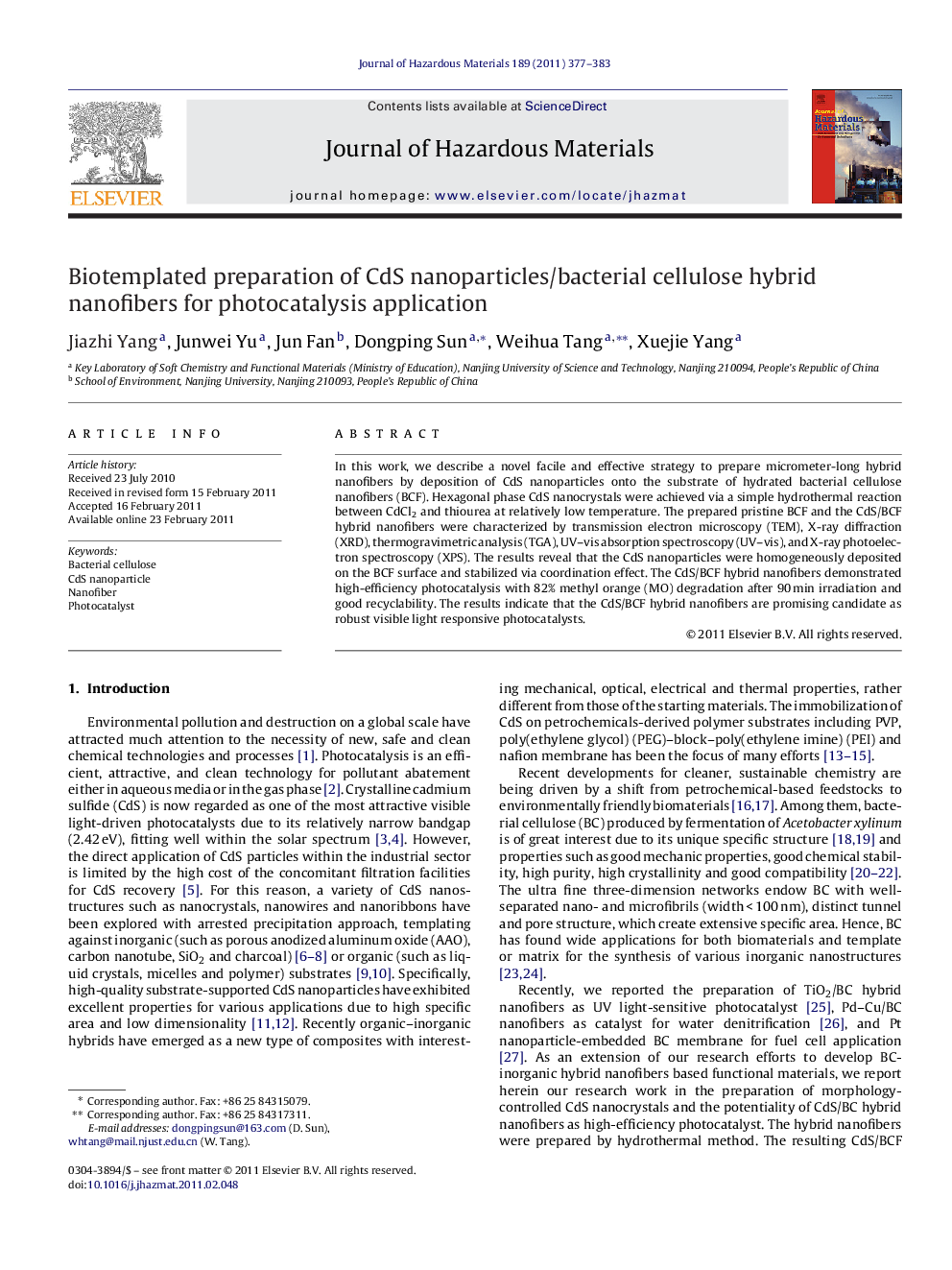| Article ID | Journal | Published Year | Pages | File Type |
|---|---|---|---|---|
| 579383 | Journal of Hazardous Materials | 2011 | 7 Pages |
Abstract
In this work, we describe a novel facile and effective strategy to prepare micrometer-long hybrid nanofibers by deposition of CdS nanoparticles onto the substrate of hydrated bacterial cellulose nanofibers (BCF). Hexagonal phase CdS nanocrystals were achieved via a simple hydrothermal reaction between CdCl2 and thiourea at relatively low temperature. The prepared pristine BCF and the CdS/BCF hybrid nanofibers were characterized by transmission electron microscopy (TEM), X-ray diffraction (XRD), thermogravimetric analysis (TGA), UV-vis absorption spectroscopy (UV-vis), and X-ray photoelectron spectroscopy (XPS). The results reveal that the CdS nanoparticles were homogeneously deposited on the BCF surface and stabilized via coordination effect. The CdS/BCF hybrid nanofibers demonstrated high-efficiency photocatalysis with 82% methyl orange (MO) degradation after 90Â min irradiation and good recyclability. The results indicate that the CdS/BCF hybrid nanofibers are promising candidate as robust visible light responsive photocatalysts.
Related Topics
Physical Sciences and Engineering
Chemical Engineering
Chemical Health and Safety
Authors
Jiazhi Yang, Junwei Yu, Jun Fan, Dongping Sun, Weihua Tang, Xuejie Yang,
